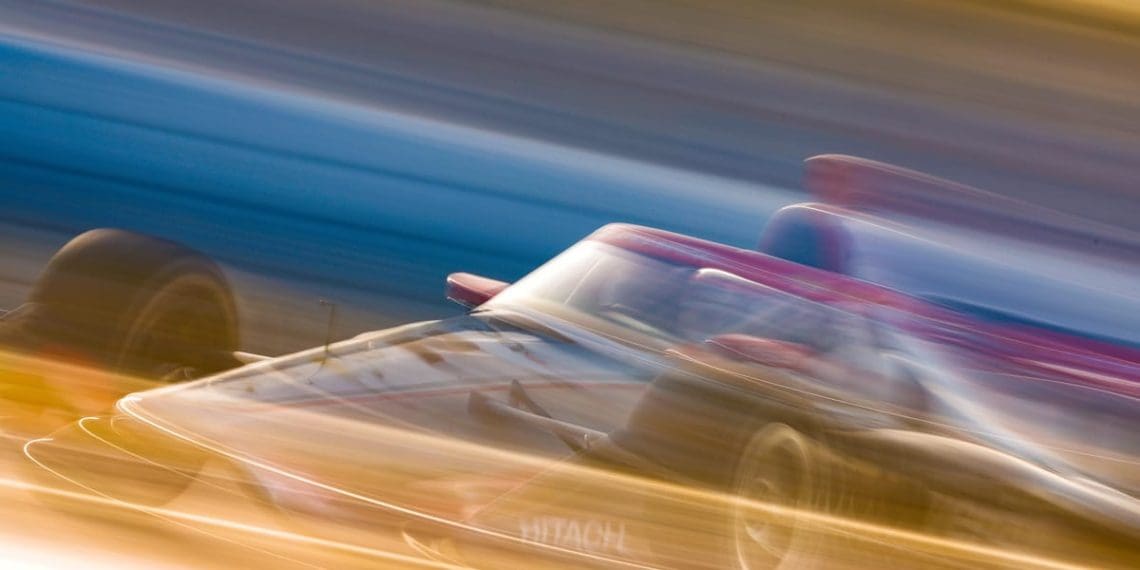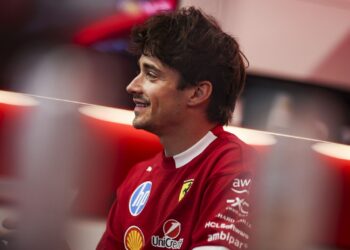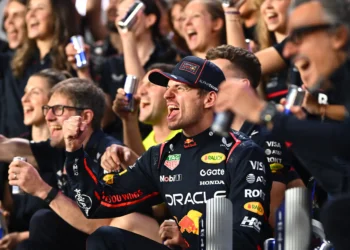In preparation for the start of the IndyCar season in St. Petersburg, new information has been revealed about the series’ plans for the future. This includes updates on new car parts, rule changes, and insights from series president Mark Miles on various topics such as hybrid power, a possible new car for 2027, and TV opportunities. Before the race in St. Petersburg, let’s analyze what we have learned about the future of the series, both regarding 2024 and beyond.
During a meeting with selected press, Mark Miles highlighted some key points about the series, including a 24% increase in race attendance, an 89% increase in merchandise sales since 2021, and a 4% growth in sponsorship revenue. He addressed fans’ concerns about the delay in implementing the hybrid engine formula and acknowledged the need for change under Roger Penske’s leadership. Miles emphasized that IndyCar is committed to long-term growth, even if it doesn’t have the same financial resources as other racing series.
Regarding the hybrid system, which has faced several delays, Miles expressed confidence that it will be introduced this summer. He mentioned that a team that tested the system found it ready for use, but supply issues and ensuring its reliability for the entire grid have been challenges. Miles also noted that the timing of the hybrid introduction aligns with the current state of the automotive market, as consumer adoption of fully electric technology has been slower than anticipated.
The current IndyCar chassis has been in use since 2012 and, while it has led to close racing, some fans have expressed dissatisfaction with the lack of future planning. Miles revealed that IndyCar plans to introduce a new engine and chassis for 2027, with the goal of attracting a third manufacturer and reducing costs. Improvements in safety and making the car more environmentally friendly are also priorities for the new chassis.
There have been rumors about the introduction of a charter system similar to NASCAR in IndyCar, which would provide guaranteed entries for the Indianapolis 500. Miles acknowledged fans’ concerns about this possible change and stated that the latest proposal does not include guaranteed entries for the Indianapolis 500. Discussions are ongoing with team owners to address this issue.
IndyCar has shown interest in expanding its international presence, considering opportunities outside the United States. Although plans for a non-championship race in Argentina have been postponed due to an economic crisis, Miles expressed a proactive approach to exploring international races in the future.
IndyCar has promoted or co-promoted its own events, giving the series more control over organization and planning. This strategy has been successful in several locations, and IndyCar intends to apply this approach in new areas. The focus is on increasing presence in metropolitan markets, especially in the northeast, and discussions are ongoing for possible co-promoted races.
IndyCar’s current agreement with NBC will end after the 2024 season. The series has been exploring potential media partners and expects to announce its decision before the Indianapolis 500 in May. The main priority is to increase the series’ reach with the next media agreement.
In terms of technical updates, IndyCar has been working on weight reduction measures before the introduction of a hybrid unit. The aeroscreen device has been refined to be lighter and 3D printed using titanium. The car will also feature a gearbox and magnesium housing to reduce weight. The hybrid system will allow drivers to manually decide when to charge the unit using regeneration, and the extra hybrid power should be manually activated. The hybrid unit uses a supercapacitor instead of heavy batteries, providing a significant power boost.
Other updates to the car include safety improvements, such as stronger front wheel bearing retention nuts and rear tethers with attached cables. The brake discs have also been upgraded for better cooling. Additionally, there are new LEDs on the rear wing to improve visibility in rainy conditions.
There are some rule changes for the upcoming season. A significant change is the introduction of a restart line, where cars cannot overtake until they reach that line after the final turn, but before the finish line. This rule aims to avoid unnecessary incidents during restarts. St. Petersburg will also have a new practice format to deal with red flag issues, with sessions being split into two groups.
Overall, IndyCar is looking towards the future with plans for new car parts, possible rule changes, and international expansion. The series aims to enhance its presence, increase viewership, and provide exciting races for fans.
© 2024
A new record has been set in the world of motorsports! Last weekend, Brazilian driver João Silva claimed victory at the Monza Grand Prix, leaving his competitors behind and crossing the finish line in first place. With this impressive achievement, Silva becomes the first Brazilian to win this iconic race.
The race was thrilling from start to finish. Silva started in pole position and maintained a consistent pace throughout the race. He showed skill and determination in overtaking his rivals, securing the lead from the early laps. Despite the pressure from his opponents, Silva stayed strong and crossed the finish line with a significant advantage.
Silva’s victory is a historic milestone for Brazilian motorsport. He is a promising talent who has been standing out on international tracks. At just 25 years old, Silva already has several victories in his career and is becoming a recognized name in the world of motor sports. His performance at the Monza Grand Prix certainly puts him in the spotlight and opens doors for future opportunities.
Silva dedicated his victory to his team and all the fans who have supported him throughout his journey. He expressed his gratitude for the opportunity to compete at such a high level and promised to continue working hard to achieve even more success. With his talent and determination, there is no doubt that Silva has a bright future ahead.
The Monza Grand Prix is one of the most prestigious races on the motorsport calendar. It is known for its challenging track and skilled drivers who compete in it. Silva’s victory in this iconic race is a remarkable feat and will certainly be remembered for a long time.
Now, all eyes are on the next stage of the championship, where Silva will seek to maintain his moment of success. With his recent victory, he positions himself as a strong candidate for the title. Brazilian fans are excited about Silva’s performance and eagerly await more thrills in the upcoming races.
Brazilian motorsport has much to celebrate with Silva’s victory at the Monza Grand Prix. He is an example of talent and perseverance, and his achievement will certainly inspire the next generation of Brazilian drivers. Congratulations to João Silva for this incredible victory and may he continue to shine on the tracks!










